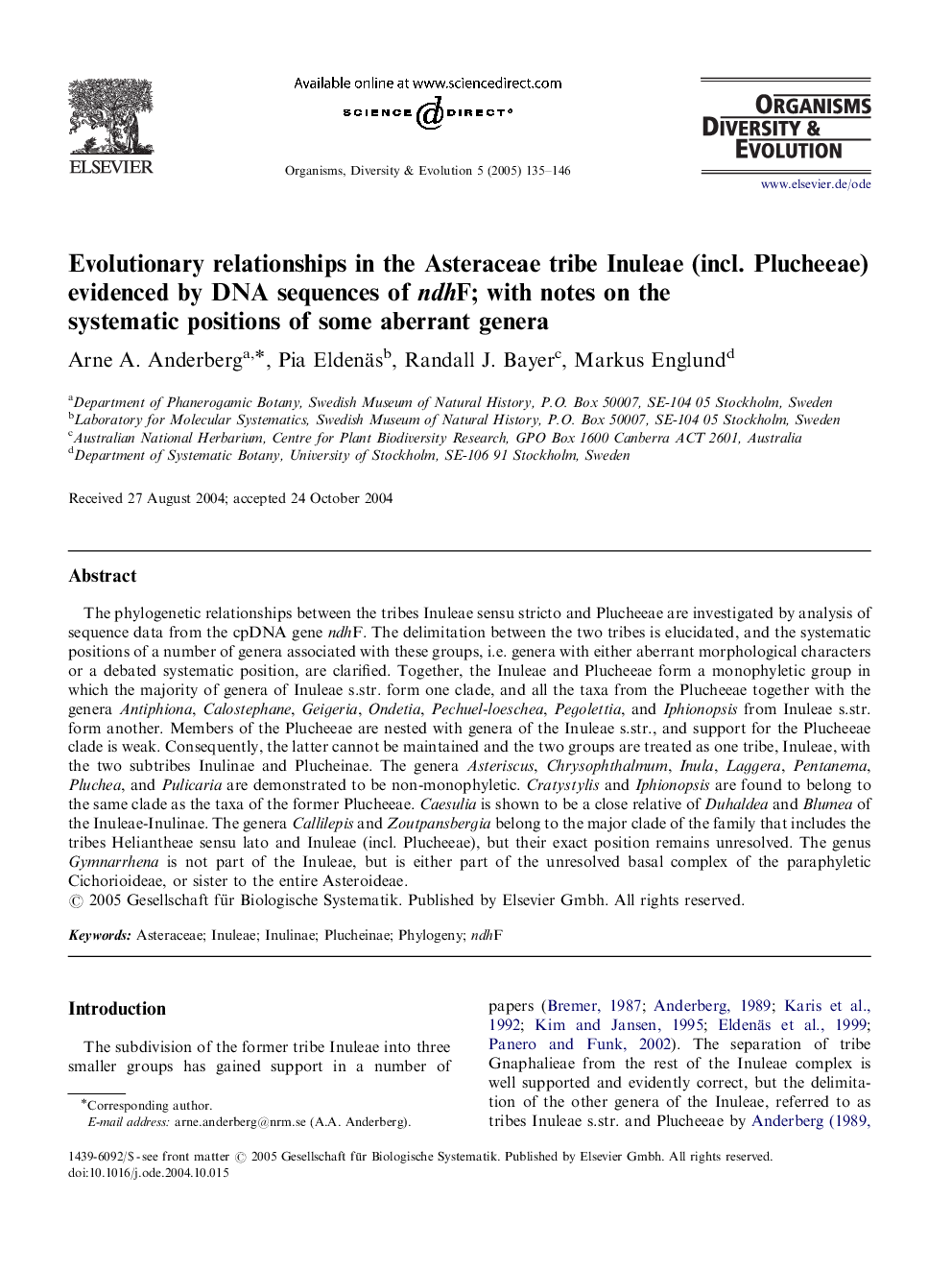| Article ID | Journal | Published Year | Pages | File Type |
|---|---|---|---|---|
| 9461443 | Organisms Diversity & Evolution | 2005 | 12 Pages |
Abstract
The phylogenetic relationships between the tribes Inuleae sensu stricto and Plucheeae are investigated by analysis of sequence data from the cpDNA gene ndhF. The delimitation between the two tribes is elucidated, and the systematic positions of a number of genera associated with these groups, i.e. genera with either aberrant morphological characters or a debated systematic position, are clarified. Together, the Inuleae and Plucheeae form a monophyletic group in which the majority of genera of Inuleae s.str. form one clade, and all the taxa from the Plucheeae together with the genera Antiphiona, Calostephane, Geigeria, Ondetia, Pechuel-loeschea, Pegolettia, and Iphionopsis from Inuleae s.str. form another. Members of the Plucheeae are nested with genera of the Inuleae s.str., and support for the Plucheeae clade is weak. Consequently, the latter cannot be maintained and the two groups are treated as one tribe, Inuleae, with the two subtribes Inulinae and Plucheinae. The genera Asteriscus, Chrysophthalmum, Inula, Laggera, Pentanema, Pluchea, and Pulicaria are demonstrated to be non-monophyletic. Cratystylis and Iphionopsis are found to belong to the same clade as the taxa of the former Plucheeae. Caesulia is shown to be a close relative of Duhaldea and Blumea of the Inuleae-Inulinae. The genera Callilepis and Zoutpansbergia belong to the major clade of the family that includes the tribes Heliantheae sensu lato and Inuleae (incl. Plucheeae), but their exact position remains unresolved. The genus Gymnarrhena is not part of the Inuleae, but is either part of the unresolved basal complex of the paraphyletic Cichorioideae, or sister to the entire Asteroideae.
Keywords
Related Topics
Life Sciences
Agricultural and Biological Sciences
Animal Science and Zoology
Authors
Arne A. Anderberg, Pia Eldenäs, Randall J. Bayer, Markus Englund,
